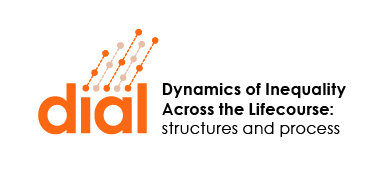We characterize the optimal linear tax on capital in an Overlapping Generations model with two period lived households facing uninsurable idiosyncratic labor income risk. The Ramsey government internalizes the general equilibrium effects of private precautionary saving on factor prices and taxes capital unless the weight on future generations in the social welfare function is sufficiently high. For logarithmic utility a complete analytical solution of the Ramsey problem exhibits an optimal aggregate saving rate that is independent of income risk, whereas the optimal time-invariant tax on capital implementing this saving rate is increasing in income risk. The optimal saving rate is constant along the transition and its sign depends on the magnitude of risk and on the Pareto weight of future generations. If the Ramsey tax rate that maximizes steady state utility is positive, then implementing this tax rate permanently induces a Pareto-improving transition even if the initial equilibrium capital stock is below the golden rule.
